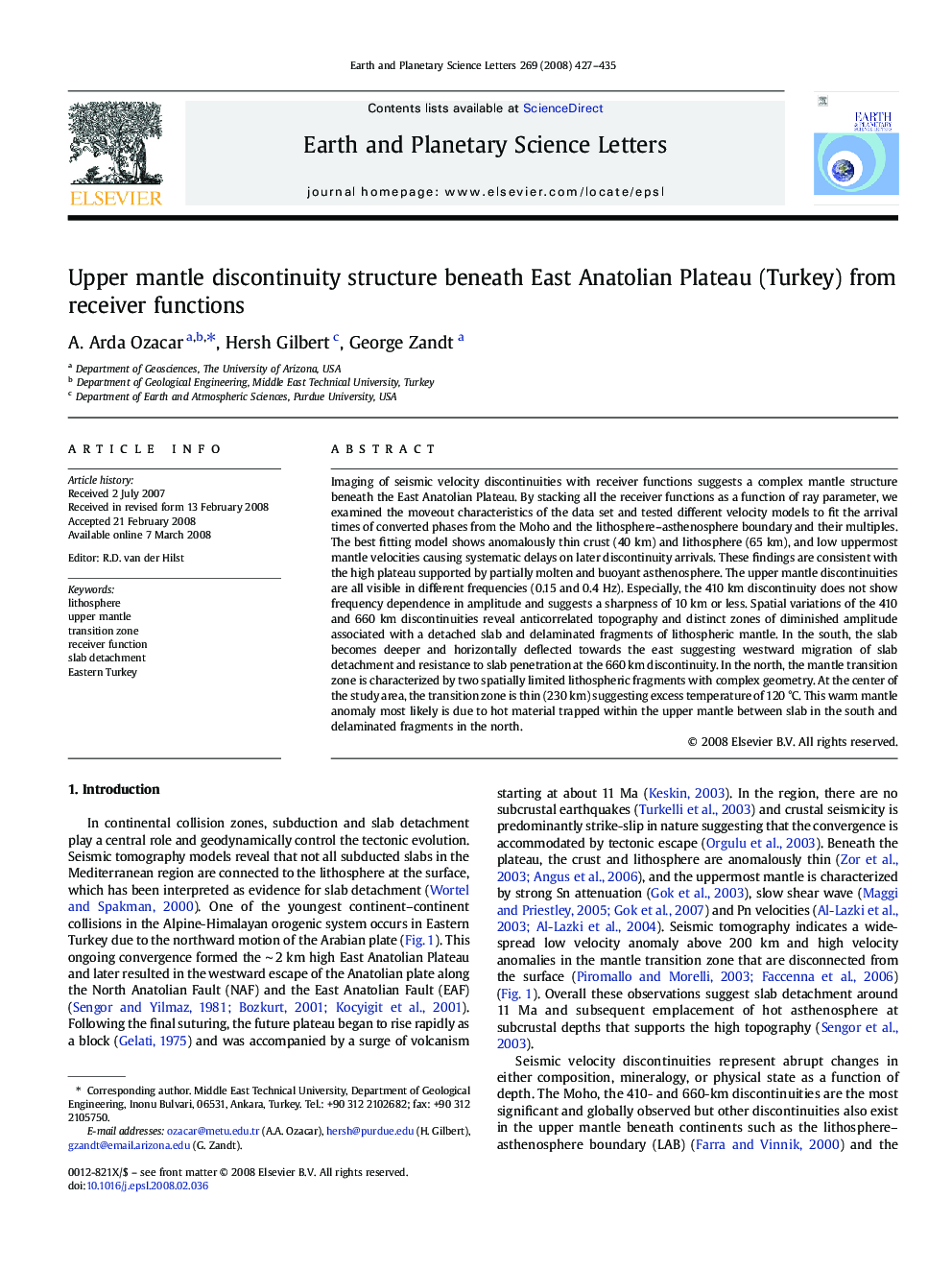| Article ID | Journal | Published Year | Pages | File Type |
|---|---|---|---|---|
| 4679781 | Earth and Planetary Science Letters | 2008 | 9 Pages |
Imaging of seismic velocity discontinuities with receiver functions suggests a complex mantle structure beneath the East Anatolian Plateau. By stacking all the receiver functions as a function of ray parameter, we examined the moveout characteristics of the data set and tested different velocity models to fit the arrival times of converted phases from the Moho and the lithosphere–asthenosphere boundary and their multiples. The best fitting model shows anomalously thin crust (40 km) and lithosphere (65 km), and low uppermost mantle velocities causing systematic delays on later discontinuity arrivals. These findings are consistent with the high plateau supported by partially molten and buoyant asthenosphere. The upper mantle discontinuities are all visible in different frequencies (0.15 and 0.4 Hz). Especially, the 410 km discontinuity does not show frequency dependence in amplitude and suggests a sharpness of 10 km or less. Spatial variations of the 410 and 660 km discontinuities reveal anticorrelated topography and distinct zones of diminished amplitude associated with a detached slab and delaminated fragments of lithospheric mantle. In the south, the slab becomes deeper and horizontally deflected towards the east suggesting westward migration of slab detachment and resistance to slab penetration at the 660 km discontinuity. In the north, the mantle transition zone is characterized by two spatially limited lithospheric fragments with complex geometry. At the center of the study area, the transition zone is thin (230 km) suggesting excess temperature of 120 °C. This warm mantle anomaly most likely is due to hot material trapped within the upper mantle between slab in the south and delaminated fragments in the north.
